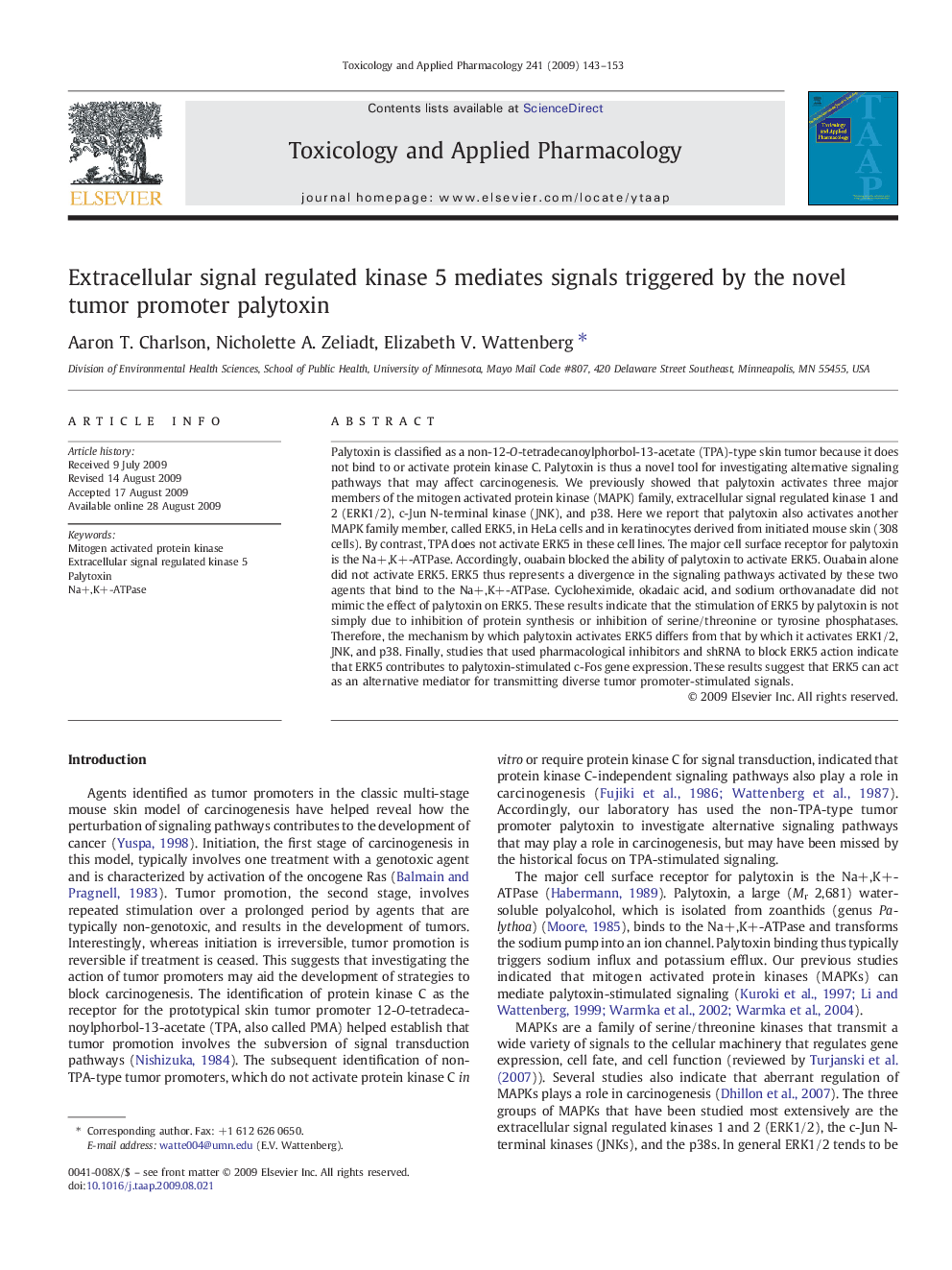| Article ID | Journal | Published Year | Pages | File Type |
|---|---|---|---|---|
| 2570282 | Toxicology and Applied Pharmacology | 2009 | 11 Pages |
Palytoxin is classified as a non-12-O-tetradecanoylphorbol-13-acetate (TPA)-type skin tumor because it does not bind to or activate protein kinase C. Palytoxin is thus a novel tool for investigating alternative signaling pathways that may affect carcinogenesis. We previously showed that palytoxin activates three major members of the mitogen activated protein kinase (MAPK) family, extracellular signal regulated kinase 1 and 2 (ERK1/2), c-Jun N-terminal kinase (JNK), and p38. Here we report that palytoxin also activates another MAPK family member, called ERK5, in HeLa cells and in keratinocytes derived from initiated mouse skin (308 cells). By contrast, TPA does not activate ERK5 in these cell lines. The major cell surface receptor for palytoxin is the Na+,K+-ATPase. Accordingly, ouabain blocked the ability of palytoxin to activate ERK5. Ouabain alone did not activate ERK5. ERK5 thus represents a divergence in the signaling pathways activated by these two agents that bind to the Na+,K+-ATPase. Cycloheximide, okadaic acid, and sodium orthovanadate did not mimic the effect of palytoxin on ERK5. These results indicate that the stimulation of ERK5 by palytoxin is not simply due to inhibition of protein synthesis or inhibition of serine/threonine or tyrosine phosphatases. Therefore, the mechanism by which palytoxin activates ERK5 differs from that by which it activates ERK1/2, JNK, and p38. Finally, studies that used pharmacological inhibitors and shRNA to block ERK5 action indicate that ERK5 contributes to palytoxin-stimulated c-Fos gene expression. These results suggest that ERK5 can act as an alternative mediator for transmitting diverse tumor promoter-stimulated signals.
